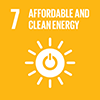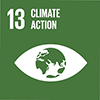June 2022 - You are accessing an old version of our website. The SDGs Voluntary Commitments have been migrated here: https://sdgs.un.org/partnerships
You will be redirected to the new Partnership Platform in 10 seconds.
June 2022 - You are accessing an old version of our website. The SDGs Voluntary Commitments have been migrated here: https://sdgs.un.org/partnerships
You will be redirected to the new Partnership Platform in 10 seconds.
To address climate change and encourage low-carbon development, China has actively promoted its national carbon trading scheme. In 2017, pilot programs have been conducted in 7 provinces and municipalities including Shanghai. By October 2018, early 7,000 main emitters in over 20 sectors had been trading in the 7 pilot carbon markets, with an accumulative turnover exceeding 264 million tones CO2 equivalent, and a trade volume of RMB 6 billion. Carbon emission has been dropping both in quantity and intensity in the pilot areas, contributing to the achievement of related SDGs.
Take Shanghai as an example. The city has extensively explored effective practices and innovation in terms of institutional design, system development and market management, providing important references to the development of a carbon trading market nationwide.
First, establishing sound and robust institutions. In drafting the pilot plan, Shanghai emphasized on the role of market forces and mechanisms. On that basis, policies and management models are designed to let the market play a major role in greenhouse gases control, forming a relatively sound market management system.
Second, phased implementation. The Shanghai pilot scheme was conducted in two phases. In phase I, enterprises reported their carbon emissions to local authorities, got quotas accordingly as a benchmark for administration, and were subject to oversight and monitoring. In phase II, the scheme was rolled out to more emitting enterprises in a larger range of sectors and the market was connected to the national carbon trading markets.
Third, innovation in carbon finance. Apart from quota trading, Shanghai’s innovation in carbon finance also includes carbon pledge and borrowing, carbon quota buyback, carbon funds, and carbon quota futures.
In the fostering of carbon market, government, enterprises and all walks of life have established trust-based cooperative relations to promote emissions reduction and green economy through multi-stakeholder coordination and cooperation.


 Start: 01 January, 2017
Start: 01 January, 2017 Completion: 31 December, 2018
Completion: 31 December, 2018